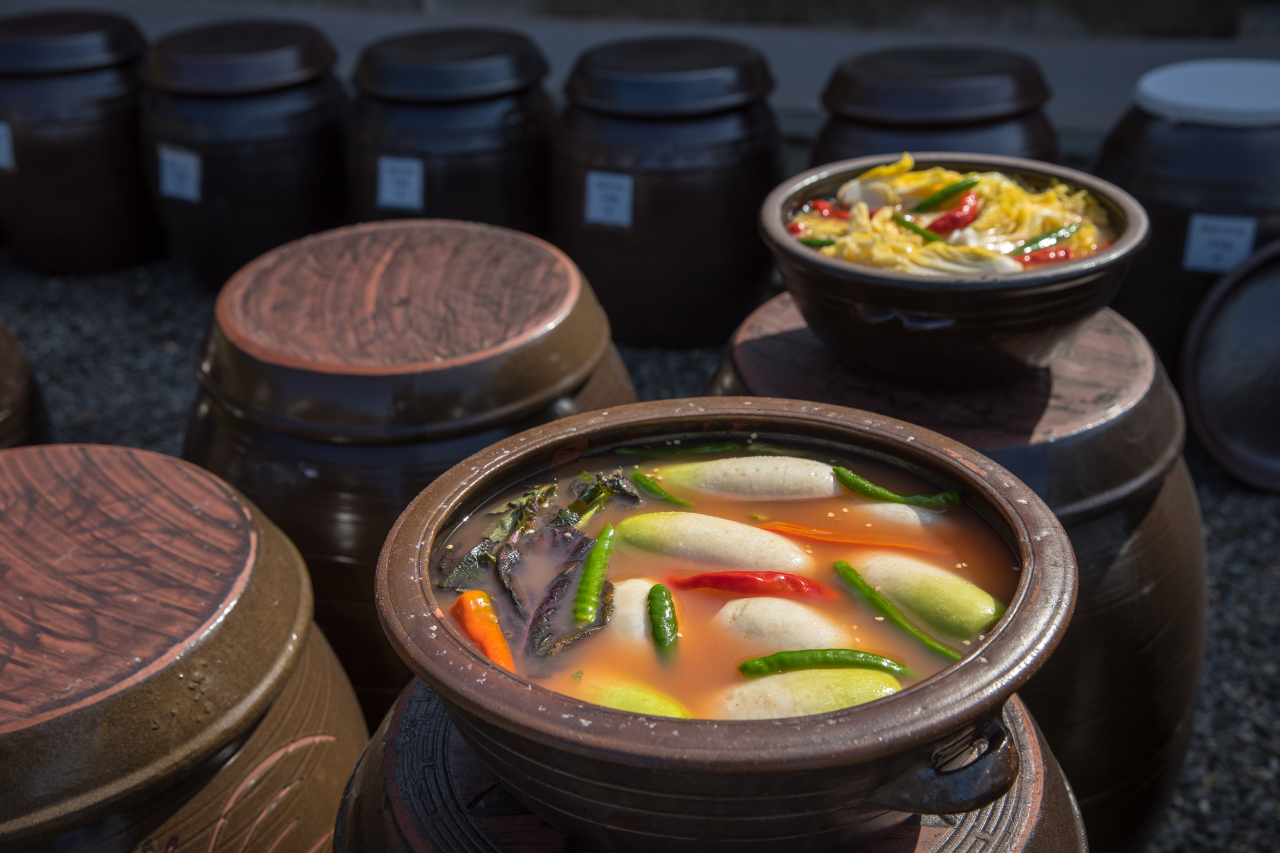[Temple to Table] Seasonal food from the earth: Dongchimi
By Kim Hae-yeonPublished : Dec. 24, 2022 - 16:00

Declaring that temple food is not just cooking, Ven. Gyeho says, “Cooking describes the process of transforming food from nature to culture, and diverse techniques are applied to make it more beautiful and tasteful. On the other hand, nature is alive in mountain temple food. The food monastics eat daily becomes their medicine. Our body is part of nature, so we should eat seasonal food from the earth in accordance with the season.”
For example, in spring when new buds sprout, one should eat young leaves and vegetables. To awaken the body that has become sluggish during winter, one uses vinegar and sugar to add sweet and sour tastes. In summer one should eat leafy veggies, and during fall root veggies such as carrots, burdock, and white radish.
“At a mountain temple almost all parts of the plant are eaten, and if there are any remnants of food not used, we use it for compost. Used tea leaves are not thrown away. We put them in with potted plants, to make plants grow better. During gimjang season, there are lots of scraps of white radish and unused Napa cabbage. We dry the leaves and greens, and cut the radishes into slices and dry them. They come in handy when making soup, jjigae (stew), and pickled side dishes. In winter when you cook spicy soups with dried cabbage or radish greens, it warms the body quickly. Cooking seasonal ingredients without any special techniques is the essence of temple food. It is not just cooking but the wisdom of life.”
Ven. Gyeho says the three major elements of temple food are purity, tenderness, and harmony with the Dharma. This means that one should clean the ingredients well, make them tender and cook them with sincerity in accordance with the Buddha’s teachings.
Dongchimi
In the heart of winter, a bowl of dongchimi with a little ice on top will lighten the heart instantly.
This is due to the digestive enzyme diastase and lactobacillus formed during fermentation. Ven. Gyeho makes dongchimi in two different versions: using eolgari (young Napa cabbage) or white radishes. It is a good side dish for early winter as it will perk up one’s appetite because the freshness of winter-harvested radishes and eolgari is preserved intact.
Ingredients
- white radishes
- sponge seaweed
- mustard greens
- Asian pear
- ginger
- salt
- glutinous rice flour
Directions
1. Wash radishes clean, and sprinkle salt evenly. Let sit 3 hours.
2. Prepare glutinous rice paste.
3. Grate ginger and pear on a grater.
4. Take out radishes which are softened from being salted, and save the brine.
5. Into the brine from step 4 add the preparations from steps 2 and 3. Add some more water and put in some salt to make dongchimi water.
6. Line sponge seaweed and mustard greens at the bottom of an earthenware crock or any container, and add the radishes. Add the dongchimi water from step 5.
7. Let sit about a week for fermentation.
Provided by Cultural Corps of Korean Buddhism
-------------------------------------------------------------------
Temple food is food of the ascetics who express gratitude for all forms of life and wish for peace all around the world. The Cultural Corps of Korean Buddhism operates the Korean Temple Food Center where guests can learn and experience temple food. -- Ed.








![[KH Explains] How should Korea adjust its trade defenses against Chinese EVs?](http://res.heraldm.com/phpwas/restmb_idxmake.php?idx=644&simg=/content/image/2024/04/15/20240415050562_0.jpg&u=20240415144419)











![[Today’s K-pop] Stray Kids to return soon: report](http://res.heraldm.com/phpwas/restmb_idxmake.php?idx=642&simg=/content/image/2024/04/16/20240416050713_0.jpg&u=)